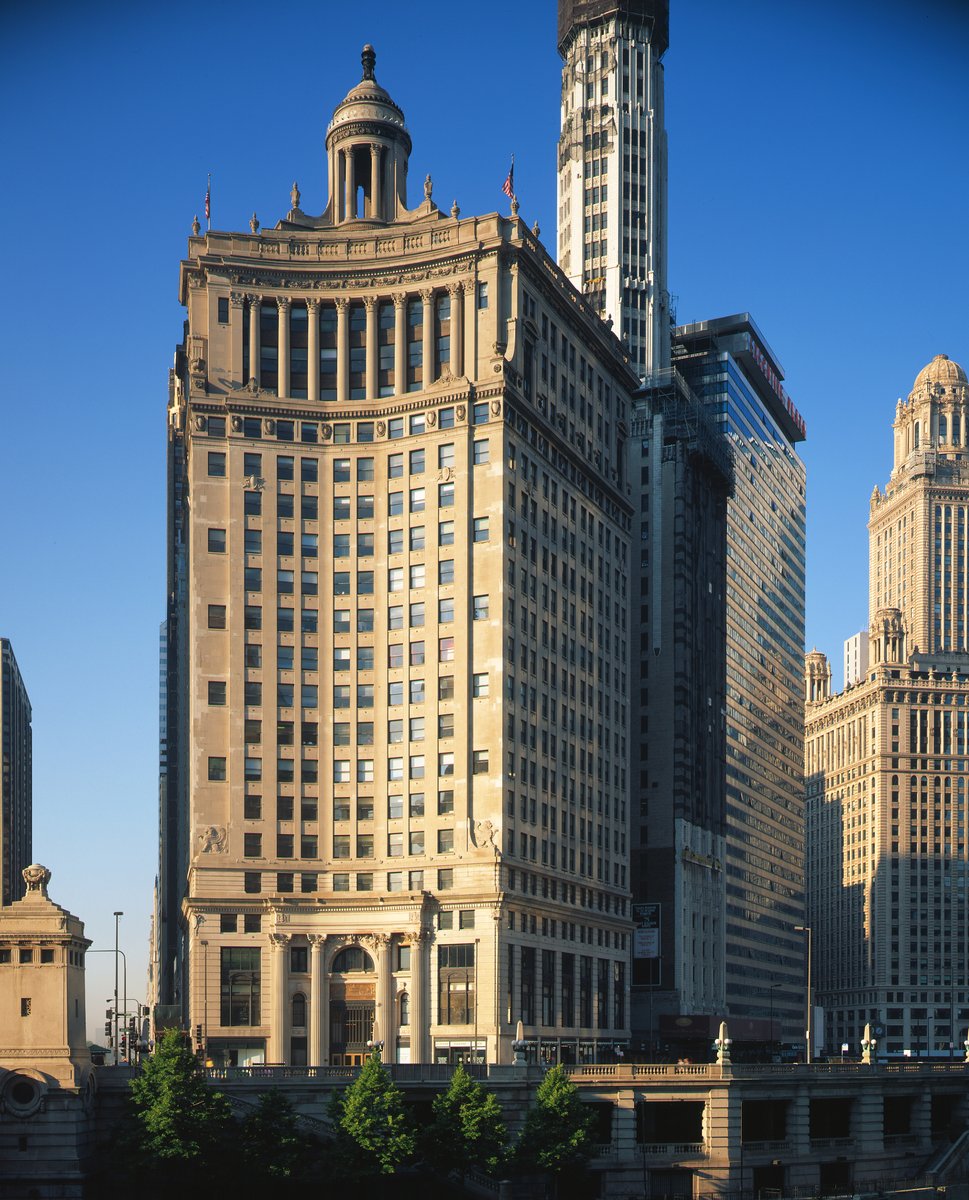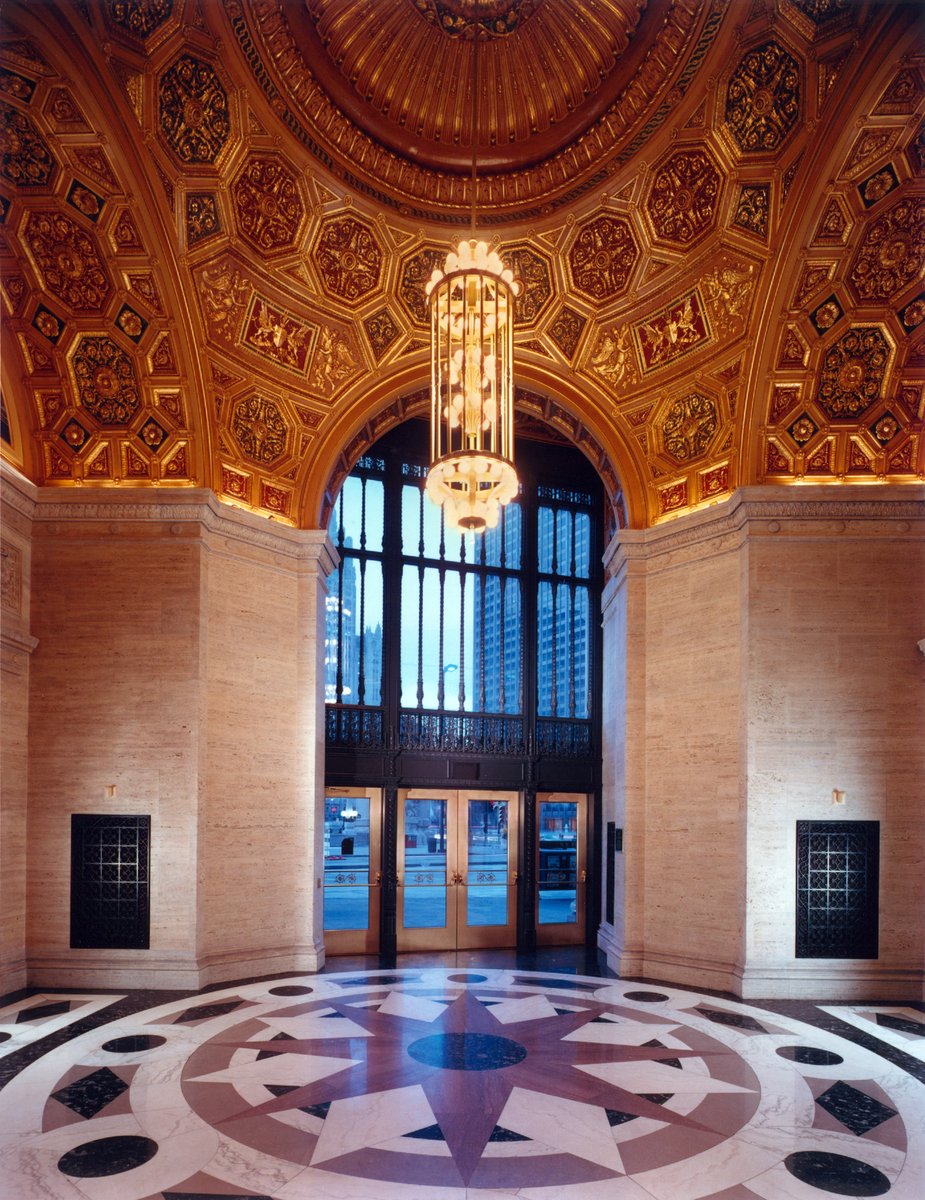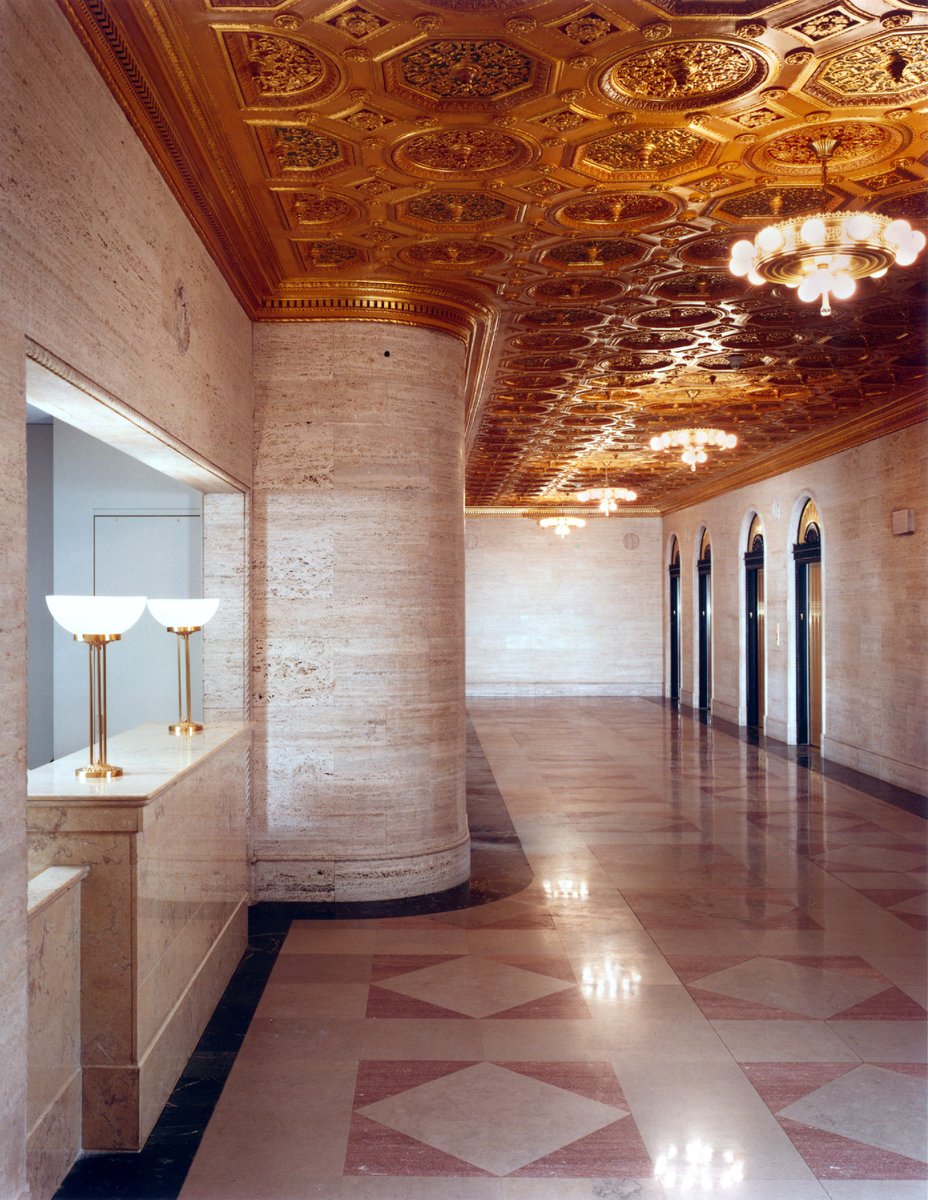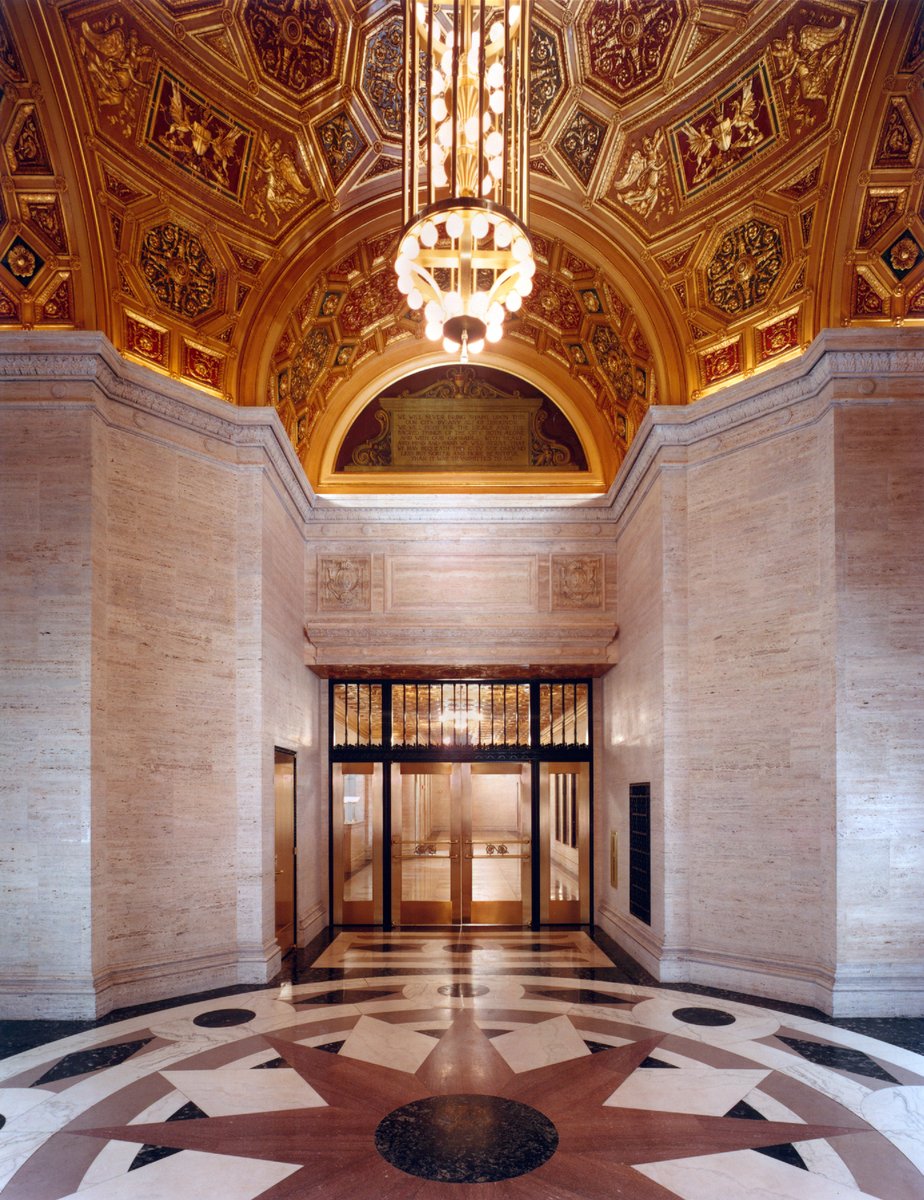360 North Michigan Avenue
Chicago, Illinois, USA
360 North Michigan Avenue has been called one of the best examples of the Beaux Arts Classical Revival style applied to the design of a tall office building. Many of the unique design details of the building were lost in a 1950s imposed modernism. The original glass and cast iron entry was destroyed and replaced by flat granite slabs and low stainless doors. The interior 30-foot-tall rotunda was covered with a “modern” acoustical tile ceiling. The renovation sought to return the building to its original character in both space volumes and detail.
A revitalization plan was developed to bring back the stature of the building, introduce state-of-the-art MEP systems and infrastructure to reach full market potential. Great care was taken to upgrade basic building systems and interior appearances, but the major design issue was to replace the long-missing entryway and restore the ornamented ceiling of the domed rotunda.
With the examination of original architect Alfred Alschuler’s drawings, and a digital enhancement of 1920s photographs, the renovation architects brought back the pattern makers trade by providing detailed pencil sketches of the two dozen patterns required for the exterior and interior storefronts. With a modern twist, the original artwork was scanned into CAD drawing files to create composite photo renderings, as well as detailed drawings for the pattern makers use in accommodating foundry shrinkage.
The building’s marble floors and walls were cleaned and refinished. A selection of the original cast elements was used to recreate the ornamental decoration of the original lobby and entrance. The elevator operating system was completely upgraded, and cabs were replaced on all cars in a phased program. Typical floor elevator lobbies, corridors and toilet rooms were replaced or renovated and a base building package of entry doors, ceilings, partitions and finishes was developed and implemented. In addition to these elements, a tenant master plan and marketing plans were developed. Now faithfully restored, the building is once more attracting tenants and the magnificent picture window once again graces one of Chicago’s most important intersections.






